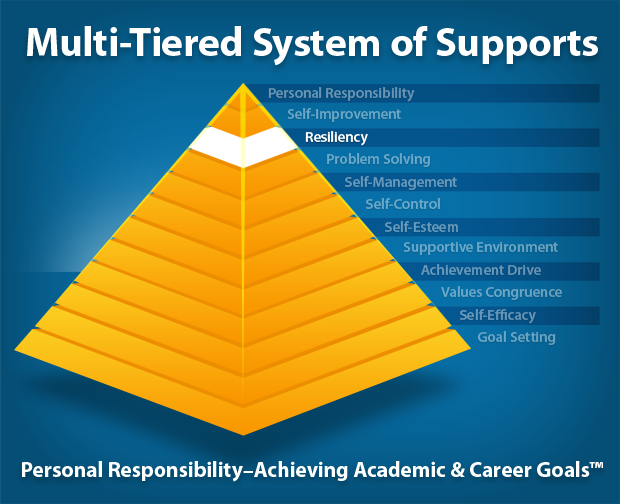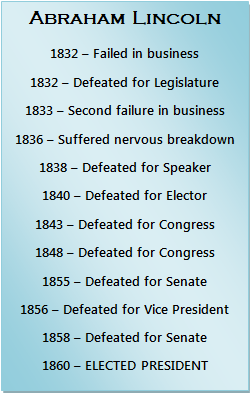
Resiliency is the tenth in our twelve-part series on our Personal Responsibility Map®, which is a core assessment in our Personal Responsibility—Achieving Academic and Career Goals™ program.
Resiliency is the ability to work through activities and cause bottom-line results to happen. Resiliency to many is the ability to bounce back from setbacks and to achieve a stated goal. Simply stated, resiliency is being able to do whatever it takes to get the job done.
Multi-Tiered System of Supports, or MTSS, is a term used to describe an evidence-based model of schooling that uses data-based problem solving to integrate academic and behavioral instructions and intervention (Florida’s MTSS Project). This definition brings together the worlds of academic instruction and behavioral intervention. In the MTSS model, helping students learn how to set and achieve goals is a core skill.
If goals are achieved, great. If goals are not achieved, then this thing called resiliency becomes a key factor to trying again. The decision to try again will also draw on problem solving skills to help decide what went wrong and how to fix it so that success is achieved (See our previous blog post on Problem Solving and MTSS).
Research has shown that the difference between success and failure is how one deals with failure. Successful people have learned a different way of facing difficulty or failure. When they fail, they get back up and start over.
Abraham Lincoln failed many times in his business and political careers. Yet he persisted and became one of our greatest presidents.
Seven Common Personal Skills of Resilient People
In our Resiliency Skill Intervention System, program participants will learn how to use seven critical personal skills that resilient people possess. They are:
-
Self-Esteem
-
Self-Efficacy
-
Goal Setting
-
Commitment
-
Self-Control
-
Stress Management
-
Problem Solving
Change and Resiliency
Change is directly linked to resiliency. Did you ever notice how people who are resilient know when and how to make changes in their lives? Take Thomas Edison. He tried for years to perfect the modern light bulb. Each failure, and he had thousands of failures, led to making needed changes in his process that ultimately led to his success.
Perhaps one of the most difficult things to accept in life is change. Why? Because change makes problems in our lives. Change results in an unknown, something with which we have to learn to live.
One simple rule about change is that when pain becomes sufficient, change will occur. The important thing is that, once pain happens, it moves us toward a way of getting rid of it. The way to get rid of pain usually results in changing some behavior. In order to develop resiliency, we must learn to accept and even embrace change in our lives.
Want to learn more about how to develop resiliency in your students? Click here to sign up for a free trial.

